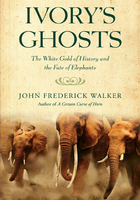The Next Paradigm
This may not seem plausible to those who are disillusioned by government, who view the institution as the perpetual problem, hopelessly dysfunctional, intractable, and ineffective.
At many times throughout our history, government has gotten it.
There have been robust periods during which government-sparked innovations informed private sector actions and energized private sector growth, not the other way around. There are numerous stories of an American public sector, from its perch of leadership, successfully applying new technologies and new organizational techniques to carry out its core public missions-such as establishing and maintaining the country's infrastructure, providing for the nation's defense, and delivering needed services and benefits to veterans and the poor.
Or, even, delivering the mail. This may come as a surprise while you wait and wait and wait on line to ship some socks to Saginaw, but the U.S. Postal Service has shown considerable innovation and creativity at some stages-repeatedly refreshing its methods, from steamboat to locomotive to airplane, in order to continue year-round universal mail service.[1] In the middle of the nineteenth century, it even used its buying power to repurpose the horse as a delivery -vehicle-subcontracting for the Pony Express, which circulated mail to the western states via land routes in half the time.[2] That flourished for about 18 months, or until people gravitated toward another means of communication: the telegraph.
The telegraph itself was a by-product of government leadership. Federal, state, and local government support for waterways, highways, and runways has traditionally been critical to the takeoff of new transportation technologies, with vehicles ultimately emerging to exploit the new transportation grids. But investing in infrastructure has meant more than paving a road or digging a canal-the government has been an active player in the research and development (R&D) sphere, enabling or designing new forms of infrastructure, notably those related to communications. In 1843, Congress provided Samuel Finley Breese Morse with $30,000 in seed money for an experimental 38-mile telegraph line between Baltimore and Washington, D.C. The experiment succeeded on May 1, 1844, when the first message was sent by Morse code-news that the Whig Party convention in Baltimore had nominated Henry Clay for president.[3]
Throughout the nineteenth century, the U.S. Army pioneered in two areas of manufacturing-interchangeable parts and -mechanization -as it made guns and weapons in its factories as well as ordered them from those of contractors. These innovative techniques came to be known as the "arsenal system," spreading from military factories to revolutionize old industries like sewing and create new ones like bicycle and automobile manufacturing.[4] The military was ahead of the private sector curve in other matters. Consider the pension program for Union veterans of the Civil War, which has been called the first national welfare state program. An early case of "information overload" inspired the federal government to build a massive Pension Building in Washington, D.C., between 1882 and 1887, to be inhabited by clerks processing pension claims. The building's architect, Montgomery C. Meigs, also invented an ingenious labor-saving device-a metal track on each floor along which office boys moved more than a ton of documents each day by using poles to shove baskets of paper that were suspended by rods.
Understandably, this history is of little consolation if you are still waiting on line at the post office-or airport security or the Department of Motor Vehicles-or worse, as we chronicled earlier, if you are waiting for word about your veteran benefits. There's no disputing that American government, while accomplishing much that has gone unnoticed, has also rightly earned a good share of the cynicism and criticism that has come its way.
Its failures and foibles have given rise and fuel to the unyielding ideologues who loudly assert that smaller-and less engaged-governance is invariably the ideal. And when those cynics cite the Framers for support, that's not empty rhetoric. The truth is that our founders did focus on limiting the power of the federal government in the lives of Americans-and no one complained. For most of America's first century, government played a tiny role in daily life. A diffuse country where most Americans lived on farms disconnected from one another had little use-and little desire-for an activist, big federal government. When the distance your horse could take you was the circumference of most of your life, decisions in state capitals and Washington, D.C., had little impact on ordinary people. In the years just before and especially after the Civil War, that began to change.
First, Americans moved west in earnest, and we became a continental nation with a larger set of concerns. New lands needed to be managed, and a country with grand ambitions needed infrastructure that only the government could help bring about such as the transcontinental railroad and the aforementioned telegraph. Second, the country was undergoing a rapid period of industrialization, with millions of American moving from farms to cities, from the fields to factory floors, and from mom-and-pop farms and shops to large corporations, very similar to what China is experiencing today. The rise of companies like Standard Oil in the last third of the nineteenth century, followed by U.S. Steel and others in the early twentieth century, began to concern many Americans. Those Americans saw those companies' apparently unlimited economic power, and saw a society rapidly changing-and not always for the better. The independence, imagined or romanticized, of the yeoman farmer toiling in his fields gave way to millions of Americans working for companies built on the management principles of the day-hierarchical, top-down, and large-or losing out to those large entities in the marketplace. Crowded slums, oppressive sweatshops, dangerous factories and mines, forced child labor, companies exercising monopoly power, and harmful products being churned out by these factories were exposed by the crusading muckraking journalists of their day.
More needed to be done to limit the unchecked economic power of the new breed of big businesses and banks. At the time, however, American government-of any kind-didn't appear to be ideally equipped for such an assignment. On the local level, urban bosses dominated the politics of rapidly growing cities and were predominantly focused on divvying up the spoils of power, ignoring the needs of their residents in much the same way that businesses ignored those of their workers. Things weren't operating much better at the federal level. In the early 1870s, the federal government employed just 51,020 civilians, of whom 36,696 were postal workers-and there, too, a spoils system rewarded political cronies and party hacks with the few government jobs. Nor was the federal government on the cutting edge of technology, especially as compared to the private sector. Consider the typewriter. In 1887, a report published in the Penman's Art Journal noted that typewriter usage had proliferated in the private sector to such an extent in less than five years that the instrument had gone from curiosity to critical infrastructure "in almost every well regulated business establishment."[5] In contrast, the federal government had failed to incorporate the productivity tool at all.
It would take considerable time for the technology gap to close, but on the management front, pressure built for something to be done, to enable the government to take a more constructive role in limiting unchecked economic power. Then came the thunderbolt event of 1881, the assassination of President James Garfield by Charles Guiteau, a political supporter angry about being denied an ambassadorship.[6] That inspired progressive reformers to fight for a regularized and bureaucratized government where officeholders were insulated from politics. With this new "civil service" in place, government became more professionalized and ready to act.
In 1887, the Interstate Commerce Commission was established, the first major attempt of the federal government to oversee the national economy. The bill creating the commission, signed by President Grover Cleveland, stemmed from the widespread belief, especially among western farmers, that railroads were systematically abusing their power, in terms of setting rates on shipments. Railroads had to set "reasonable" rates and, in an effort to curtail corruption, were restricted from giving preference to any person, company, location, city, or type of traffic. Three years later, with Benjamin Harrison in the White House, the federal government took another major regulatory action, the Sherman Antitrust Act, passed to bust up the big monopolies.
These were the first national accomplishments of the emerging progressive movement. And by "progressive," don't think of how it's used in Washington today, as a euphemism for "liberal" and a description of the political philosophy of many in the Democratic Party. The progressive movement of the late nineteenth and early twentieth centuries was not a partisan effort-it flowed through both political parties. It carried along Republicans like Teddy Roose-velt and Democrats like Woodrow Wilson, and it had devotees in small towns and big cities. But it united its adherents with a vision of a government that was brought up-to-date: a massive, hierarchical, bureaucratic enterprise to check the massive, hierarchical corporations. The progressive push set the stage for the twentieth century to be the bureaucratic century, in both the private and public sectors.
But again, it didn't all happen at once. While the first decades of the twentieth century saw the birth of new federal agencies (such as the Department of Labor and the Federal Trade Commission) and even the passage of important new laws to protect workers, regulate the quality of food and drugs sold, and oversee banks, it took the trauma of the Great Depression to create the building blocks of the federal government we know today.
Faced with a society in which at least one in four Americans were without work, Franklin D. Roosevelt said, "It is common sense to take a method and try it: if it fails, admit it frankly and try another-but above all, try something." He and his fellow New Dealers tried many things-some worked, some did not. But what they did do, without any argument, was remake the way in which Americans thought about the role of government. The New Deal doubled the percentage of the national economy devoted to government, and led to an alphabet soup of new government agencies: the SEC, FCC, CAB, NLRB, NRA, WPA, and CCC.[7] World War II then accelerated the growth in the size and scope of government as the nation mobilized for war. Government spending jumped from $9 billion in 1940 to $98 billion in 1944-the year Americans landed at Normandy. Rationing of certain foods and other essential goods such as gasoline, metal, and rubber was instituted. While industries were not nationalized, the government took an active role in directing the economy through a range of government organizations such as the War Production Board; the Supply Priorities Allocation Board; and the Office of Price Administration, which implemented new price controls on goods. Once victory was in hand, the most direct controls on the economy mainly abated; what remained was an enlarged defense establishment (what President Eisenhower would later characterize as the "military-industrial complex"), the New Deal agencies and programs, and the large bureaucracies to carry out their missions.
Though the two parties found much to fight about in the postwar years, there was a basic consensus about the role of government for much of that time: economic security would be provided to people through rule-bound bureaucracies, which, whatever their faults, would be fair and equitable in their treatment of people. As present-day government reform gurus David Osborne and Ted Gaebler put it: "[The government] delivered the basic, no-frills, one-size-fits-all services people needed and expected in the industrial era: roads, highways, sewers, and schools." Similar to those in the private sector, these large organizations had to collect and organize millions of records, without the computing power that we have sitting on our desktops and bouncing around in our pockets today. The result was an apparatus that, for the most part, was a "government of clerks"-tens of thousands of them. At times, it could be maddening dealing with the red tape, but in an era that moved slower and in which large, impersonal, hierarchical organizations were the norm, it was accepted: if you waited to go to your bank for the three hours it was open on Wednesday to make a deposit, you were not necessarily shocked that you had to do the same for a passport or marriage license. As the economy boomed and tax revenue continued coming in, this system worked. And from the GI Bill to the Interstate Highway System to federal home loans to the space program, the postwar government did amazing things that helped to create an American golden age.[8]
But that was short-lived. As America encountered more turbulence in the 1960s and 1970s, trust in government plummeted. Historians have long debated the core causes of that decline, though there's no denying it was a time of traumatic, transformative events that shook people's belief in institutions of many kinds: from the struggle for racial equality to the assassinations of the Kennedy brothers and Martin Luther King Jr. to the stunning lack of transparency throughout the war in Vietnam and the investigation of the Watergate affair.[9] Parents whose children were drafted into a conflict of unclear purpose and no defined end certainly had cause to lose some faith in the government. But, so, too, did those who were simply sending their kids to school, in hopes of a better future. There was a growing belief that government was no longer delivering the requisite results in the areas of education or employment. As the National Commission on Excellence in Education found in its seminal 1983 report, A Nation at Risk, SAT scores had been on a steady decline from 1963 to 1980, about 13 percent of all 17-year-olds were functionally illiterate with the rate as high as 40 percent in some minority communities; and the number of students needing remedial math courses in colleges and universities jumped by 72 percent from 1975 to 1980.[10]
Even high school graduates with passable skills found good--paying jobs in short supply. The factories, foundries, and plants that powered the postwar boom in the Northeast and Midwest started to chase cheaper labor and sunnier climes in order to keep up with global competitors-taking jobs with them. A quarter century that saw rising incomes across the board came to an end in the early 1970s and was replaced with stagnating incomes for households even as women left the home and entered the workforce. Oil shocks and inflation battered the economy, and modern-day muckrakers exposed the problems with the air we breathed, the water we drank, and even the toys we gave our kids. In the ensuing years, cities, from Newark to Cleveland, Baltimore to Detroit, started to become trouble zones, with violent crime more than doubling during the 1960s, and welfare rolls increasing by 43 percent during the 1970s.[11]
So, as the 1960s of moptops and Beatlemania slowly turned into the 1970s of bellbottoms and Saturday Night Fever, something else changed: Americans' view of government, as many citizens began to identify an inverse relationship between its size (expanding) and its effectiveness (diminishing). Much of that growth was on account of entitlement programs intended to support the populace, programs such as Social Security, Medicare, and Medicaid that were widely popular;[12] according to data from the Congressional Research Service, such mandatory spending represented less than 30 percent of total federal spending in 1962, ballooning to 45 percent of total spending by 1980.[13]
No matter. The American people, fed up with rising tax rates and a declining payoff, started to disengage from their government. In 1964, 76 percent of those polled said that they trusted the federal government to do the right thing just about always or most of the time. By 1972, 53 percent expressed that view. And by 1980, only 25 percent did. In the mid-1960s, less than half of Americans agreed with the notion that people in government waste a lot of taxpayers' money. By 1978, that figure had grown to more than three-quarters of those polled.[14]
Around that time, some of those people started to strike back.[15] In June 1978, voters in California-a state that had invested millions of dollars in the previous decades to create world-class public universities, miles of new highways and roads, and a vast new water system-passed Proposition 13, which constrained the rate of tax increases on property. This marked the start of a taxpayers' revolt that spread across the country as 13 states passed efforts to limit taxing and spending and 23 state legislatures called for a constitutional convention to consider a balanced-budget amendment to the U.S. Constitution. On Election Day of that year, the Republican Party-with a reinvigorated antitax, small-government faction-gained three Senate seats, 12 House seats, and six governorships. In 1980, a former actor named Ronald Reagan rode that rebellious wave into the White House in a win that would have been absolutely unthinkable a decade earlier.
Addressing the country after being sworn in on a cold January day in 1981, Reagan said: "In this present crisis, government is not the solution to our problem; government is the problem."[16]
Reagan's election was a victory for those on the right who challenged the New Deal orthodoxy. Resolutely free market and antigovernment, these conservatives believed that reducing the size and scope of government-from taxes to regulations-would unleash the "creative destruction" of the marketplace. In addition to the tax cuts and regulatory rollbacks the Reagan administration undertook, it also launched an effort to cut the fat out of Washington.
In 1982, President Reagan appointed businessman J. Peter Grace to lead a commission to "work like tireless bloodhounds to root out government inefficiency and waste of tax dollars." For two years, 161 corporate executives and community leaders led a group of 2,000 volunteers to comb through the catalogues and catacombs of the federal bureaucracy to find waste and mismanagement. Issued by the Grace Commission, The President's Private Sector Survey on Cost Control made 2,478 recommendations, which it predicted would save $424.4 billion over three years. It issued 47 volumes totaling 21,000 pages-all of which did little more than gather dust.[17]
Part of that was because the Democratic Congress was uninterested in cooperating with a Republican president's plans to slash the size of government. But part of it was that the Grace Commission was not solving the right problem.
When you hear about a revolutionary, you usually think of a South American guerrilla wearing a beret or an eighteenth-century Frenchman taking to the streets and storming the barricades. But in late-twentieth-century Washington, a revolutionary was more likely to come in the form of Jim Pinkerton-an ungainly, six-foot-nine-inch 32-year-old working in a midlevel job in President George H. W. Bush's White House.
Jim Pinkerton was a most unlikely choice to help lead an intellectual revolution. Graduating from college in 1979, he had rushed to volunteer for Ronald Reagan's presidential campaign and became one of a cadre of young people swept into the federal government when Reagan defeated President Jimmy Carter the following fall. By 1988, Pinkerton had become the protégé of George H. W. Bush campaign manager Lee Atwater, a legend of smashmouth politics, who made Pinkerton the Bush campaign's director of opposition research, its master of dark arts. He was the man who brought Willie Horton to the attention of the Bush campaign. A murderer who had raped a woman after Democratic presidential candidate Michael Dukakis gave him a weekend furlough, Horton became symbolic of the candidate's lack of strength on crime. In a campaign better known for its brutally negative attacks than real substance and ideas, Pinkerton was on the front lines, and was indispensable.[18]
Pinkerton was rewarded for his work on the campaign with a critical post in the incoming Bush administration in 1989-the position of deputy director of domestic policy at the White House. Occupying a domestic policy job in an administration fixated on the foreign policy challenges surrounding the end of the Cold War, the invasion of Panama, the crackdown at Tiananmen Square, and the first Gulf War was a little like being the famous Maytag repairman: you ended up with a lot of time on your hands. In between meetings on agricultural subsidies and disability policies, Jim Pinkerton came to a realization: twentieth-century government just wasn't working.
The problem was not only that government had grown overweight; it had become antiquated in a rapidly changing world. As factories were being padlocked and the personal computing revolution was taking shape, government was not simply resisting downsizing, it was resisting updating. The very paradigm was under question-and had to be rethought. "Even the most conservative President in recent American history, Ronald Reagan, couldn't put a dent in the welfare state," Pinkerton would say. "So the issue becomes, how do we make it work better?"
At that moment in Washington, others from both parties were coming to the realization as well. One of them was Elaine Kamarck, a Democratic policy wonk with a PhD in political science from Berkeley. Together, she and Pinkerton launched what they called the New Paradigm Society, a highfalutin' name for what amounted to a series of dinnertime bull sessions on topics such as education reform and housing policy. Pinkerton and Kamarck invited academics like Bill Galston from the University of Maryland and Amitai Etzioni of George Washington University as well as journalists such as Joe Klein of New York magazine and Paul Gigot of the Wall Street Journal; even politicians-HUD Secretary Jack Kemp and former Arizona governor Bruce Babbitt-occasionally joined them. Backbench Congressman Newt Gingrich was also a regular.
Much of the Bush administration had little use for the theoretical musings of the New Paradigm Society. Richard Darman, the powerful director of the White House Office of Management and Budget, derided the focus on "empowerment" as "effete," and claimed the term itself too reminiscent of the "power to the people" calls of the radical Black Panthers. "In the real world," he said in a public speech attacking the New Paradigm Society, observers "might simply dismiss it by picking up the refrain, 'Hey, brother, can you paradigm?'"[19]
But Pinkerton and his fellow travelers had hit upon some very real challenges with what government had become. They had looked back over the past decade and seen how the New Deal manner of governing-the centralized bureaucracy-no longer was working. In What Comes Next, a book outlining his views, Pinkerton identified five "bugs" with this "operating system":[20]
Parkinson's Law: in the words of the late British author C. Northcote Parkinson, "work expands to fill the time available for its completion."[21] It is the opposite of a more productive organization; less with more, whether in number of employees or man hours per employee. At the end of the nineteenth century when about half of Americans lived on farms, the Department of Agriculture had just 2,019 employees. By the 1990s, when only 1 in 40 Americans lived on farms, the department had more than 100,000 employees.[22]
Peterism or the Peter Principle: in which people who consistently fail somehow manage to keep their jobs, or keep getting promoted, nonetheless. In 1990, out of 2.2 million federal civil servants, only 403 were fired for incompetence.[23]
Oligarchism: the bureaucracy comes to make its self--preservation the overriding priority. Reams of studies support what I saw firsthand in government: no -department-whether the National Institutes of Health or the Pentagon-relishes slashing its own budget. Extraordinary effort and leadership are required to make the slightest dent.
Olsonism: named after the economist Mancur Olson who observed that the rise of interest groups can lead to a small number of committed individuals asserting an outsized impact on decisions. Any individual earmark or slice of Congressional pork is too small to bother the entire country, but the company or community benefiting from it will fight like mad for its inclusion.
Information Infarction: bureaucratic decision making fails because a bureaucracy cannot know all the relevant information. In top-down, hierarchical organizations, those on the frontlines have little incentive to present information that threatens the status quo. And when they do learn new, relevant information, it often takes too long for it to travel up the chain, be considered, and trickle back to have an impact.
As I know from my advisory work in the private sector, these were problems not necessarily unique to government. If you could travel back in time and ask an engineer at IBM or an assembly-line worker at a General Electric plant in the 1960s about their jobs and bosses, they, too, would drone on about bureaucracy and red tape. The difference is that as times got tough in the 1970s and 1980s, large companies began to reinvent themselves-moving from top-down to flat structures, relying on teams and networks to solve problems, putting quality first, and utilizing the latest in information technology to deliver for their customers.
And, as management guru Peter Drucker pointed out, these large companies had no choice. From automobiles to steel, rubber, and consumer electronics, the industries that powered the phenomenal growth in the U.S. economy from the late nineteenth century and into the middle of the twentieth were all dealt heavy blows with the "oil shocks" of 1973 and 1979, as well as competition from abroad, which exposed their fundamental weaknesses in a changing world. Unsurprisingly, these large companies contributed nothing to U.S. job growth during the two decades between 1965 and 1985. In fact, between 1970 and 1984, the Fortune 500 had permanently lost (that is, not counting recession-driven unemployment) between 4 and 6 million jobs, while the country added upwards of 40 million jobs. This was a 180-degree turnaround from the period before that (1945 to 1970) when large companies-as well as large government agencies at every level-created almost all the new jobs. To Drucker and others, it was "entrepreneurial management" that was growing new, innovative, competitive companies, rejuvenating older ones, and powering the U.S. economy.[24]
Pinkerton and the New Paradigmers believed that government had to reinvent and reengineer itself too. "Why can't we use technology to create a citizen-driven, desktop, user-friendly, 800--number government?" Pinkerton asked in the fall of 1991. As the 1990s began, the man who brought the world Willie Horton found a willing audience and some allies in an unlikely place: the Democratic Party.
The revolution came first in local and state governance. By 1982, state and local governments had lost nearly one of every four federal dollars they received in 1978.[25] With the deep recession of 1982 and the requirement that many had to have a balanced budget, state and local governments had to get creative. What ensued was public sector innovation all across America-from the decision in Indianapolis to outsource, or put up for private sector competition, the delivery of many services; to St. Paul, Minnesota, creating private, nonprofit corporations to redevelop its neighborhoods; to the state of Illinois reimbursing nursing homes based on quality of care delivered rather than the number of seniors kept under care. These mayors and governors had no time for the philosophical debates between the postwar, big-government liberals and the Reaganite, laissez-faire conservatives. They needed to get their job done-deliver services and serve their communities. The ideological means didn't matter.[26]
Innovations at the state level intrigued a group of Democrats who rejected not only the conservative paradigm of less government as the solution but also the old liberal paradigm that more government was always the answer. Known as New Democrats, their home was a small organization on Capitol Hill called the Democratic Leadership Council (DLC), run by Al From, a slow-talking, shy, bespectacled lifetime staffer, and chaired by a man who was his opposite: Arkansas Governor Bill Clinton. Clinton and the New Democrats believed, like Pinkerton did, that government had an important role to play, but it needed to be reinvented for the increasingly global, information-age economy. In its New American Choice Resolutions, unveiled at their May 1991 convention in Cleveland, the DLC called for stripping away "unneeded layers of bureaucracy" not because government was not needed but because "decentralized bureaucracies are no longer the best or most effective way to deliver services." Clinton and the New Democrats wanted a review of all government programs to determine if they had to be carried out by the federal government or indeed were needed at all, and supported a 3 percent reduction in the federal government's administrative and personnel expenses. Even more notably, the New Democrats' prescriptions for curbing pollution, improving education, and expanding health care-all core Democratic beliefs-relied chiefly on market mechanisms, contrary to the party's previous line of thinking.[27]
A mere five months following the DLC convention in 1991, Bill Clinton announced he was running for president, and central to his candidacy was his belief in reinventing government, which he called the New Covenant. Soon thereafter, Pinkerton left the White House to join the Bush reelection campaign. As one observer at the time put it: "His [Pinkerton's] mission is now poignantly simple: to destroy the one candidate who seems earnestly engaged with his own idea." Pinkerton was unsuccessful in that mission; in January 1993, Bill Clinton took the oath of office, and would go on to execute his vision, handing the assignment to his highest-ranking deputy, the Vice President, Al Gore.
The government bureaucrats; idealistic, private sector management experts; and newly minted White House staffers gathered to hear their marching orders from their new boss and did so with anticipation and an understandable case of nerves. They were charged with working on an initiative that was at the core of the new presidency and would be central to its ultimate success-or failure.
As Clinton and Gore had written in their best-selling campaign manifesto Putting People First:
"We cannot put people first and create jobs and economic growth without a revolution in government. We must take away power from the entrenched bureaucracies and special interests that dominate Washington. We can no longer afford to pay more for-and get less from-our government. The answer for every problem cannot always be another program or more money. It is time to radically change the way government operates-to shift from top-down bureaucracy to entrepreneurial government that empowers citizens and communities to change our country from the bottom up. We must reward the people and ideas that work and get rid of those that don't."[28]
Clinton and Gore backed up the rhetoric with substantive proposals. They called for a 25 percent reduction in the White House staff, the elimination of 100,000 unnecessary positions in the federal bureaucracy through attrition, and a three percent across-the-board administrative savings in every agency. Clinton's twelve years as a governor had helped teach him that it was not enough for people of good intentions to pass legislation and authorize new programs. Those programs had to be effective if they were going to have an impact. If government did not work, it would not make a positive difference. If Americans didn't believe that their tax dollars were being spent wisely, then they wouldn't trust government to spend them on anything.
To underscore the importance of this initiative, Clinton assigned it to Gore in the early days of his presidency and asked for a report of recommendations for action in six months' time. Gore's chief policy advisor? That just happened to be Pinkerton's coconspirator in the New Paradigm Society: Elaine Kamarck.
When Kamarck stepped forward to address the members of the task force for the first time, she presented them with a rationale for their work that stretched far beyond the political needs of Clinton and Gore, the need to reduce government spending, or even the important but mundane task of making the public sector more effective. As opposed to previous efforts such as the Grace Commission, the effort Kamarck led would be about the larger task of saving government itself-making it useful and relevant to a changing world.
As she put it to the assembled group:
"In the [1950s], people's experience in the private sector and the public sector was likely to be similar. You'd have to go to a bank between nine and three, you'd have to stand in a line, you'd have to deal with someone, and that was also the experience you'd have if you were getting a passport. Starting in the late seventies, the private sector discovered customer service with a vengeance. They started using computer technology to make things easy for people; the standout example is a bank ATM machine. And so while the private sector was knocking its brains out, the government just stood still. Today, if the government were a store, nobody would buy from it. If it were an airline, nobody would fly it."[29]
Under the direction of Gore and Kamarck, what became known as the National Performance Review went to work. It was guided by four key principles: cutting red tape so that government workers were now accountable for results, not just following the rules; putting customers first; empowering employees to get results, through methods such as decentralizing authority for those on the frontlines; and getting back to basics, ending obsolete programs and functions, and investing in productivity, including new technologies.
These principles sounded simple, and they were often included in standard management consulting concepts that had delivered results in the private sector. Of course, nothing is that easy in the federal government. Kamarck and the Reinventing Government (REGO) team would have to contend with such basic things as: How can you hold a federal employee accountable for results if it's almost impossible to remove them? How do you downsize while at the same time keep employees energized to do more for your customers? How can you bring new technologies into an organization that has individual agencies and offices that dwarf any business in size and have complex and burdensome procurement procedures? And how do you do all this while under the glare of Congress and interest groups, many of whom are quite pleased with the current arrangement?
The initial REGO report was presented to President Clinton in September 1993, and had 384 specific recommendations for reform. The REGO team got to work. Five years later, Brookings scholar Don Kettl would observe, "No executive branch reform in the twentieth century-indeed, perhaps in the Constitution's 210 years-has enjoyed such high-level attention over such a broad range of activities for such a long period of time."[30]
Gore was successful in bringing attention to some of the government's reinvention efforts, even if the actual savings impact was modest in some cases. He famously went on David Letterman's late night TV show and, donning safety goggles, smashed a glass ashtray to mock the complex federal procurement standards for what the regulations termed "ash receivers, tobacco (desk type)." If the procurement process could be shifted from unique (often characterized as "gold-plated") military specifications to more common commercial substitutes, the government could benefit from market competition. And perhaps costs could come down from the ludicrous levels that previous administrations had come to accept, such as spending $54 for a stapler or $435 for a hammer.[31] Gore enshrined the spirit of the efficiency effort in creating the Hammer Awards for civil servants who helped save money and reform public systems-using the prize as an incentive for change. The 1,378 public sector recipients of the award received a ribbon, a plaque, and a hammer, one that cost just $6.
In truth, these moments, while memorable to many, didn't represent the full story. Later analysis would clarify that a single hammer itself didn't cost that much, but it had been marked up in the accounting process to cover contractors' research, development, and other fixed overhead costs.
Still, it served a purpose as part of the larger narrative, as other reform measures made more of a material impact. Nearly 2,000 obsolete field offices were closed. Two hundred and fifty programs and agencies, such as the Board of Tea Examiners and Bureau of Mines, were shut down. Government subsidies for the production of wool and mohair, which were instituted to keep production up during World War II but were no longer needed, were eliminated. In all, 13 of the 14 Cabinet departments were reduced in size, and the overall federal civilian workforce was shrunk not by the 100,000 that Clinton and Gore promised in 1992 but by a total of 426,000 positions. When that administration left the White House in 2001, the federal government workforce-as measured by military and civilian personnel and not including contractors[32]-was the smallest it had been since the Kennedy administration.[33]
However, the goal of the National Performance Review was not simply to make government cost less or do less. No, that was the goal of small-government conservatives who disagreed with the very notion of federal government action. The goal of the review was to make a government that worked better-providing higher quality services to citizens treated as customers. Here, too, the effects were far-reaching, from allowing constituents to pay taxes with a credit card, to rewriting 31,000 pages of regulation into plain English, to committing federal agencies to tangible customer service standards.
By the end of the 1990s, there was some anecdotal evidence that the American people were seeing a turnaround: one 1999 survey found that 60 percent of respondents said they had noticed improvements in public service over the previous two years-a key proxy of trust in government. But ultimately, much work remained undone. The reinventing government initiative took on the challenge of how government delivers services but-due to inertia and Congressional inaction-the larger challenge of defining government's role was often left unmet.
Gore and Kamarck's attempt to reinvent government had come too early to tap the power of the latest industrial revolution: the information technology (IT) revolution. When Gore presented his initial report to Clinton in September 1993, there were a total of 204 websites in existence on the entire Internet. The World Wide Web, invented in 1989, existed largely in name only. But during the decade that followed, the world of technology exploded, driving productivity gains across the private sector.
To be fair, by 2000, REGO had pushed for the creation of more than 1,000 online forms, including IRS electronic filing, and had worked to help create FirstGov-a one-stop website for government information and transactions-with connections to 27 million web pages. And in an effort to improve the customer service taxpayers received, the IRS signed a $7.5 billion contract to modernize its computer system.
It was just the tip of the iceberg. Technology would grow by leaps and bounds, and government would struggle to keep up, with multibillion-dollar, multiyear modernization projects rarely proving to be the best way to do so. Today, each iPhone contains more computing power than existed in the entire world in 1961 when John F. Kennedy took office. Powered by advances in big data analytics, ever-expansive mobile broadband, and more secure cloud computing services, today's technological capabilities have the ability to personalize recommendations on what restaurant to try, what health care provider to select, or what higher education institution to attend. And, through a standardized set of instructions called an application programming interface (API), software products can communicate with each other with little friction, even across organizational boundaries. That allows companies to partner with others in delivering better products and services to their customers.
But none of that was available to Kamarck and her team. As she later reflected, "I never got rid of the nagging suspicion that the government we were trying to reform was…functioning, but hopelessly obsolete. We were operating on a corpse or rearranging the deck chairs on the Titanic."
With the defeat of Al Gore in 2000, it would fall to another generation of reformers to bring that power and potential to the continuing effort to reform government. As the nation's first president with an MBA, George W. Bush had promised to continue much of the Clinton-Gore Administration REGO work. And with his emphasis on a "citizen-centered," "results-oriented," and "market-based" government, Bush was operating in the new paradigm of Pinkerton and Kamarck. Bush, in particular, focused on harnessing the power of the growing Internet to open up government to the American people. He called for and created an e-government fund and the first office of e-government to coordinate these efforts, and he wanted to shift as much of government procurement as possible online to realize some of the same productivity gains and savings the private sector was seeing.[34]
Those lofty goals, like much else, were soon pushed aside after the terrorist attacks of September 11, 2001. Like the first Bush presidency, the second also became a foreign policy–focused one. Ironically, the main federal reform instituted to respond to the 9/11 attacks was one out of the old playbook: the creation of a new Cabinet agency, the Department of Homeland Security, and creating another layer of bureaucracy in the intelligence community with the establishment of the Office of the Director of National Intelligence. As the Bush administration took shape, government reform was sent to the back burner. In fact, government spending and the size of the federal government grew considerably under Bush, driven primarily by the war on terror.
The lag between our government's commitment to modernization and the continued advancements in technology grew during the remainder of the Bush presidency. Still, through the first few years of the Obama administration, the President's sponsorship of more open and innovative government shrunk the gap some in a host of areas.
Take Obama's challenge, in January 2010, to the assembled CEOs at the Forum on Modernizing Government: "If you can book dinner on OpenTable, or a flight on Southwest or United online, then why shouldn't you be able to make an appointment at your local Social Security office the same way?"
Questions like that had informed the White House's Securing Americans Value and Efficiency (SAVE) Award, which solicited ideas from frontline federal workers about how to make government more effective and efficient. Christie Dickson, a Social Security Administration employee in Birmingham, Alabama, identified a productivity drag in the system-she spent too much of her time booking appointments over the phone-and suggested online appointment scheduling.[35] While that idea didn't win the SAVE contest, it sparked a related competition, for an application that is not widely available in the private sector. Why not let veterans book physician appointments online with the same ease of an OpenTable restaurant reservation? On December 14, 2012, the VA announced an open competition on Challenge.gov, the new website President Obama launched just a few years earlier as part of his commitment to a more open and collaborative government. The VA Medical Appointment Scheduling Contest offered a chance for three teams to split $3 million if they could successfully demonstrate, in a virtual testing environment, that their innovative scheduling tools could plug in to the VA's existing Veterans Health Information Systems and Technology Architecture (VISTA) system to facilitate appointment making.
The competition gave a fair shake to the little guy (and girl)-it was made easy for smaller entities, such as startups to participate, without the burden of much overhead and bureaucracy. At the close of the entry window, it had attracted 41 competitors, many with no history of selling to the VA. Announced in October 2013, the first-, second-, and third-prize winners reflected this diversity-a startup called MedRed; a fellow VISTA-using health care provider, California-based Oroville Hospital; and a coalition led by technology power-house, Hewlett-Packard, which agreed to donate the prize purse to a veterans service organization. The winners now have the potential to gain plenty more than their purses. The VA health system, a nearly $50-billion-per-year enterprise, stands as a possible powerful anchor customer.
Others in the industry may gain, too, through the VA's establishment of a testing environment on open standards (a subject we will revisit later in the book). That will allow any health care system wishing to replicate the appointment service to more easily adopt the proven technology. The VA might offer more than the sort of online scheduling available for restaurants; it could even launch the health care equivalent of an iPhone app store, with ever lower barriers to entry for new innovative products competing on price, quality, and service.
While this is a fluid story, I have faith that it will deliver on its promise. And, as you will learn later in this book, similar techniques have resulted in thriving new government services that have even inspired private sector adoption, such as Blue Button, which allows veterans to download their own information safely and securely in a computer-friendly form. In this case, insurance companies like Aetna and United Healthcare replicated the government's functionality when they started providing the service to their commercial customers.
In this way, the government has an opportunity to return to its role, from earlier stages of American history, of introducing new services and techniques to the private sector. It all starts with government embracing a need for a new approach, a mindset that is consistent with the American legacy.
George Washington recognized the need for such new approaches. In preparation for his retirement from service following America's successful war for independence and six years before he would become its first President, Washington sent a circular letter to the states on June 8, 1783. Washington observed that the foundation of the United States "was not laid in the gloomy age of Ignorance and Superstition" and that "the Treasures of knowledge, acquired by the labours of Philosophers, Sages and Legislatures, through a long succession of years, are laid open for our use, and their collected wisdom may be happily applied in the Establishment of our forms of Government…"[36]
For Washington and the other founders, forms of government should be tried and discarded if they fail to work in favor of better, more up-to-date institutions. The Founders did exactly that. After casting off the British empire, they scrapped the first draft of America's federal government-the Articles of Confederation-for a new, stronger, more effective federal government. With Washington presiding at the Philadelphia convention in 1787, they drafted a Constitution that allowed for change.
Americans have always understood that government is not some sacred entity with which the people should not tamper. Nor is it an evil, external force. It is a tool. Like other tools, it needs to be revised and upgraded to remain useful.
From the eighteenth century to the twenty-first, we Americans have remade our federal, state, and local governments every generation or two, to solve new problems or to address old challenges better with the latest in organization and technology. What our predecessors did with the technology of the steam age and the early industrial era, we can do with the technology of the information age.
Innovation in government is not alien to the American tradition. It is the American tradition. The purpose of this book is to show how we can be true to that tradition by remaking American government once again. This is not a conceptual framework. It is a practical guide, a playbook borne of the experience I gained while serving as the nation's first Chief Technology Officer, working to instill a more open, innovative government that will meet the challenges of our day. To help put these concepts in context, and to share a bit of how I found them to be useful and effective, I'd like to take you back to some of my formative experiences.















